DIY Diwali Decoration: Step-by-Step Rangoli Guide for a Stunning Home
Diwali, the Festival of Lights, brings warmth, joy, and sparkle into every home. Among all festive decorations, rangoli holds a special place, adding vibrant colours and auspicious energy. Our step-by-step DIY Diwali Decoration guide helps you create mesmerizing rangoli designs that welcome prosperity and make your home shine during the celebrations.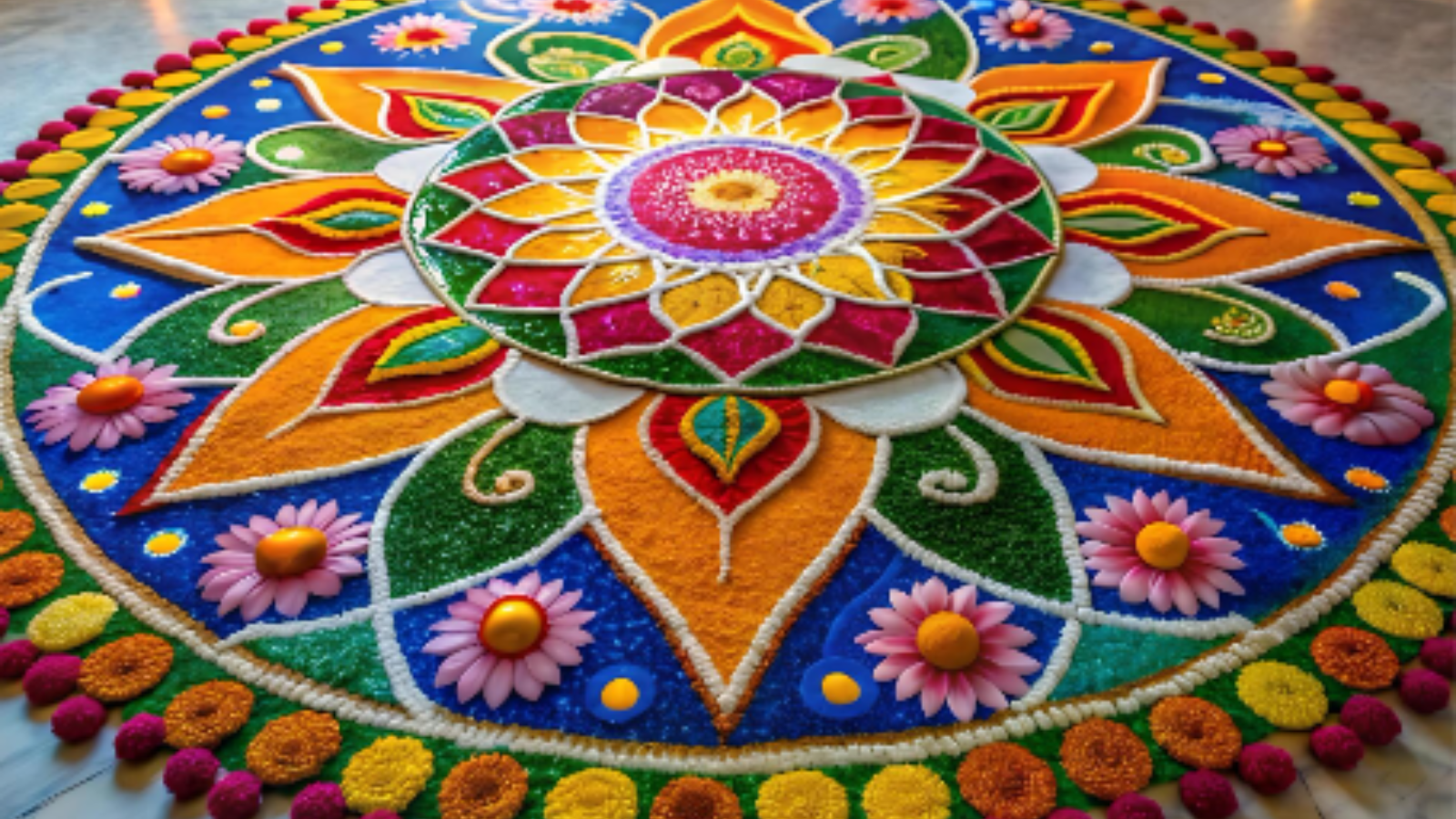
Understanding Rangoli: A Timeless Art Form
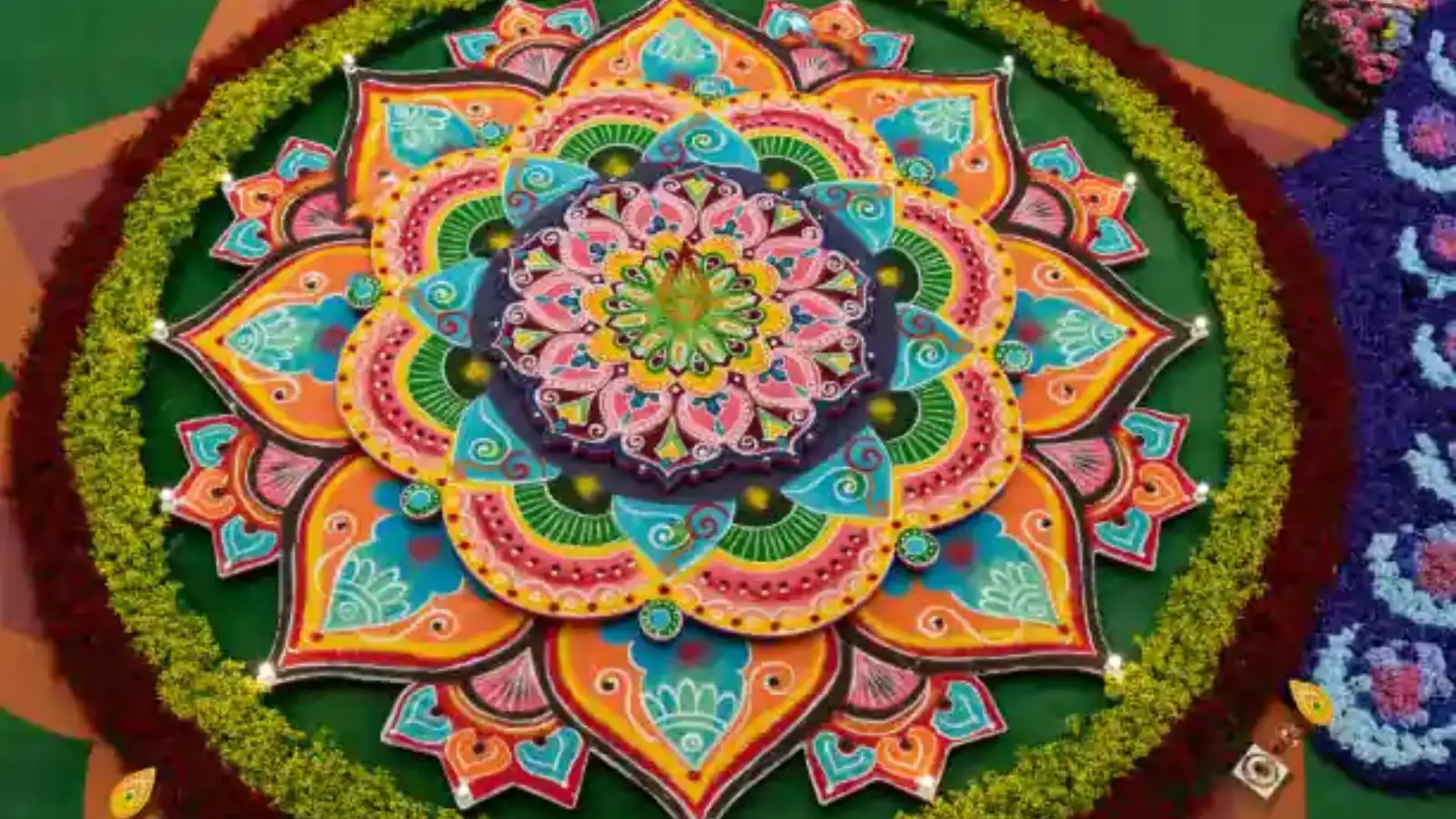
Rangoli, derived from the Sanskrit word rangavalli, means "rows of colors." This traditional art has been practised for thousands of years in India, mainly to welcome gods and goddesses into homes.
During Diwali, Diwali rangoli represents prosperity and positivity. Families gather to draw intricate patterns, from lotus flowers and peacocks to geometric shapes, fostering togetherness. Modern designs blend tradition with creativity, allowing freehand or stencil methods for stunning effects.
Each region in India offers unique styles. Some use rice flour, others coloured powders or flower petals. Despite variations, rangoli’s purpose remains the same: to spread beauty, joy, and positive energy throughout your home.
Also Read: Diwali 2025: When Is It - October 20 or 21? City-Wise Puja Timings & Exact Date
Essential Materials for DIY Diwali Decoration
A well-prepared rangoli starts with the right materials:
Eco-friendly materials, like turmeric, kumkum, and flower petals, are safe for kids, pets, and the environment. You can also create natural colours at home: turmeric for yellow, beetroot for pink, and spinach powder for green.
Preparing Your Space for Rangoli
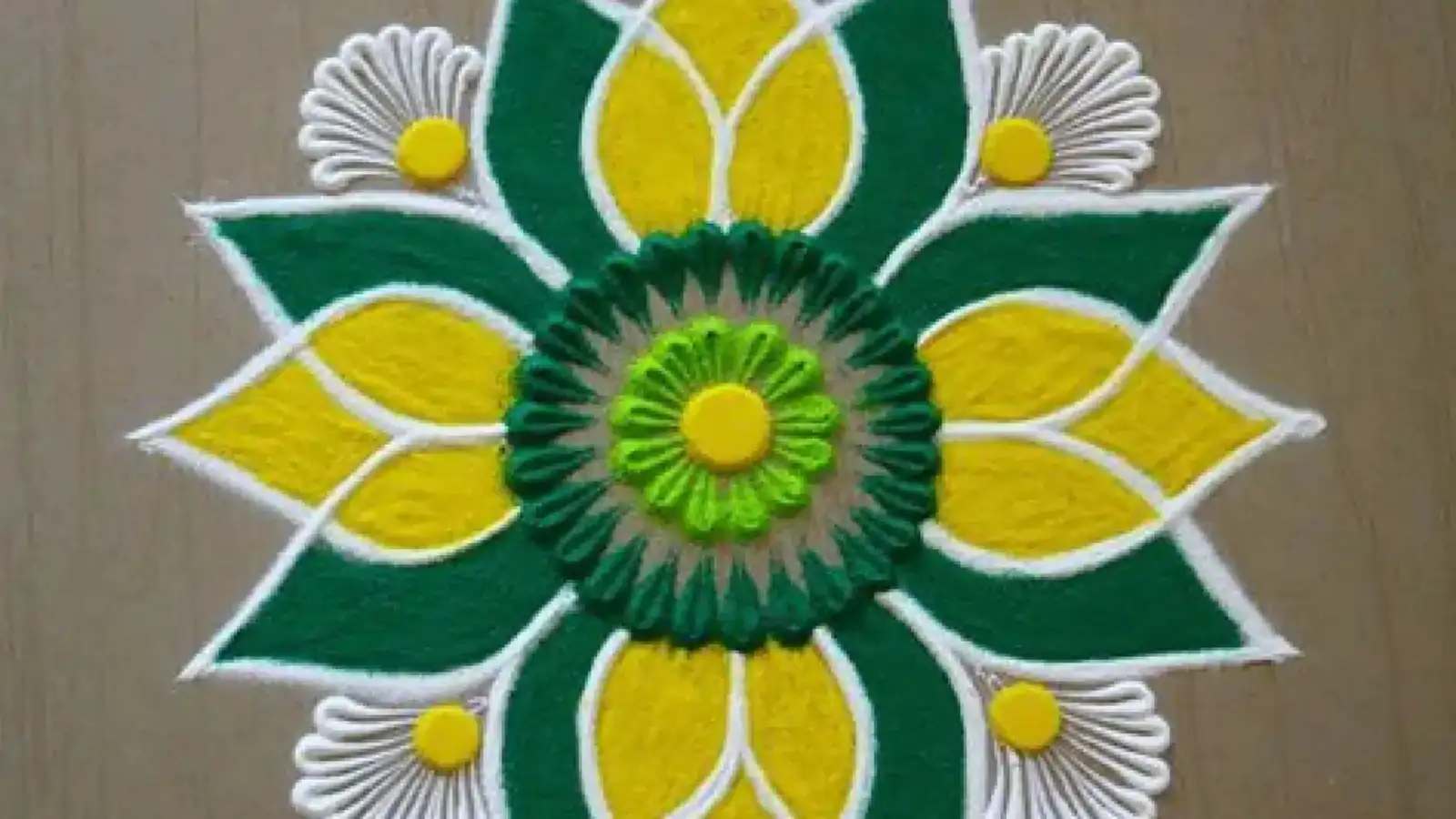
The location of your rangoli impacts both beauty and function. Main entrances are ideal for welcoming guests and Goddess Lakshmi, while living rooms and courtyards are great for indoor displays.
Steps to prepare your space:
Start small (3x3 feet) if you’re a beginner, and gradually increase complexity as your confidence grows.
Step-by-Step Guide to Creating a Basic Rangoli
Step 1: Outline Your Design
Use white rice flour or chalk powder to sketch simple geometric shapes. Dot guides help maintain symmetry. Light lines can be darkened later for clarity.
Step 2: Fill in Colors
Work from the centre outward. Use a spoon or funnel for precise application. Apply one colour at a time to avoid smudging, and keep extra powder nearby for touch-ups.
Step 3: Add Details and Embellishments
Enhance your rangoli with fine lines, dots, and swirls. Consider adding rose petals or marigold for natural beauty and fragrance. Place small diyas or candles for a festive glow.
Also Read: Diwali 2025: These Zodiac Signs Are Set to Receive Wealth, Luck, and Abundance
Advanced Rangoli Techniques and Patterns
Take your skills further with advanced designs:
Layer materials for multi-dimensional art and experiment with textures for a striking Diwali rangoli display.
Integrating Rangoli with Other Diwali Decorations
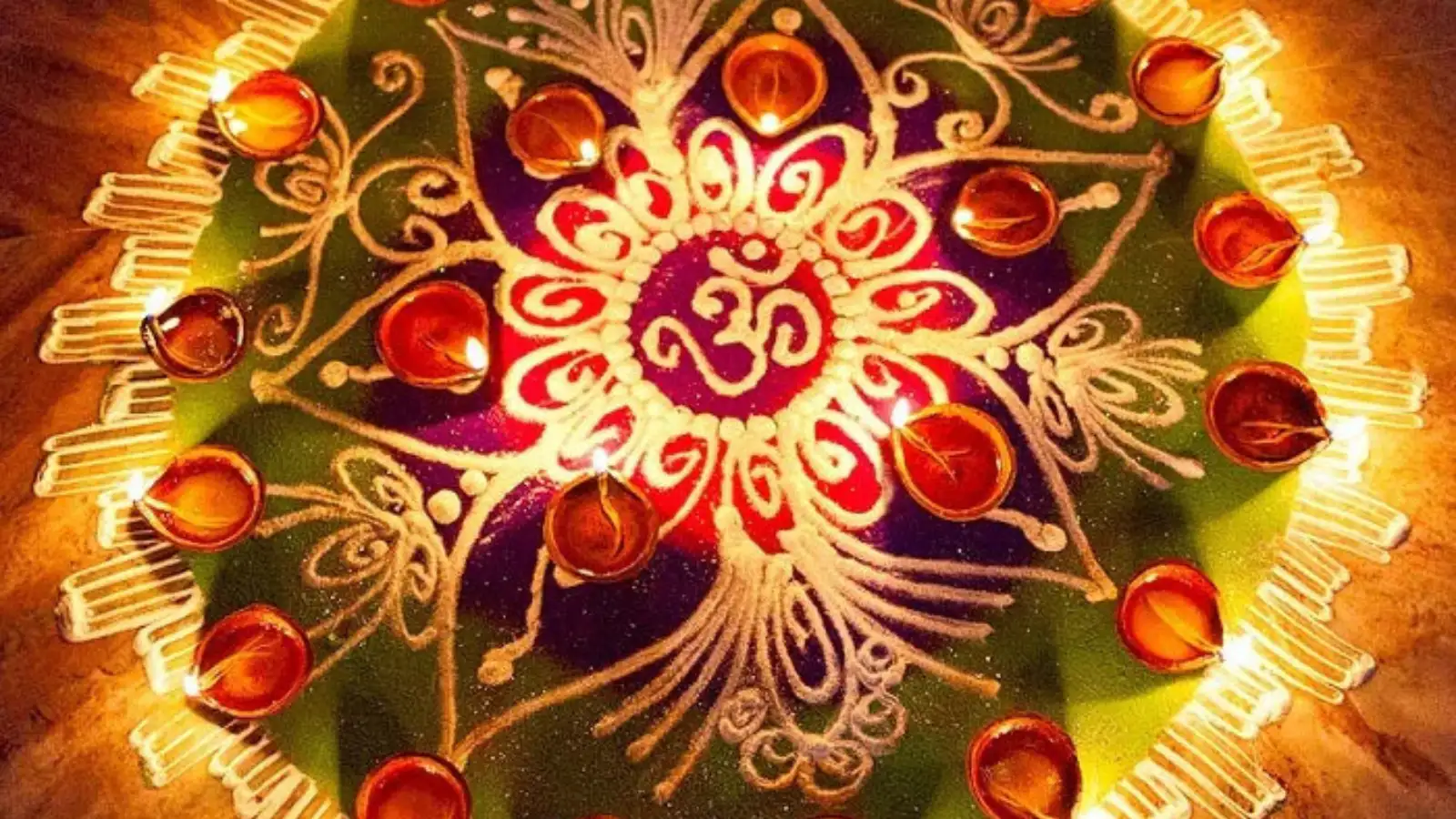
Your rangoli looks even more magical when paired with complementary decorations:
Diyas and Candles: Arrange small oil lamps around your design to frame it beautifully. Brass or copper diyas add traditional charm, while coloured glass holders offer modern flair.
Festive Lights: String lights around the perimeter to create glowing borders. LED lights add movement without disturbing powder designs.
Flower Decorations: Marigold, rose, and jasmine petals enhance colour and fragrance. Combine fresh and artificial flowers for longevity and natural beauty.
Tips for Long-Lasting and Vibrant Rangoli
Also Read: Diwali 2025: Elegant & Trendy Home Décor Ideas To Elevate Festive Vibes
Creative Rangoli Ideas for Different Areas
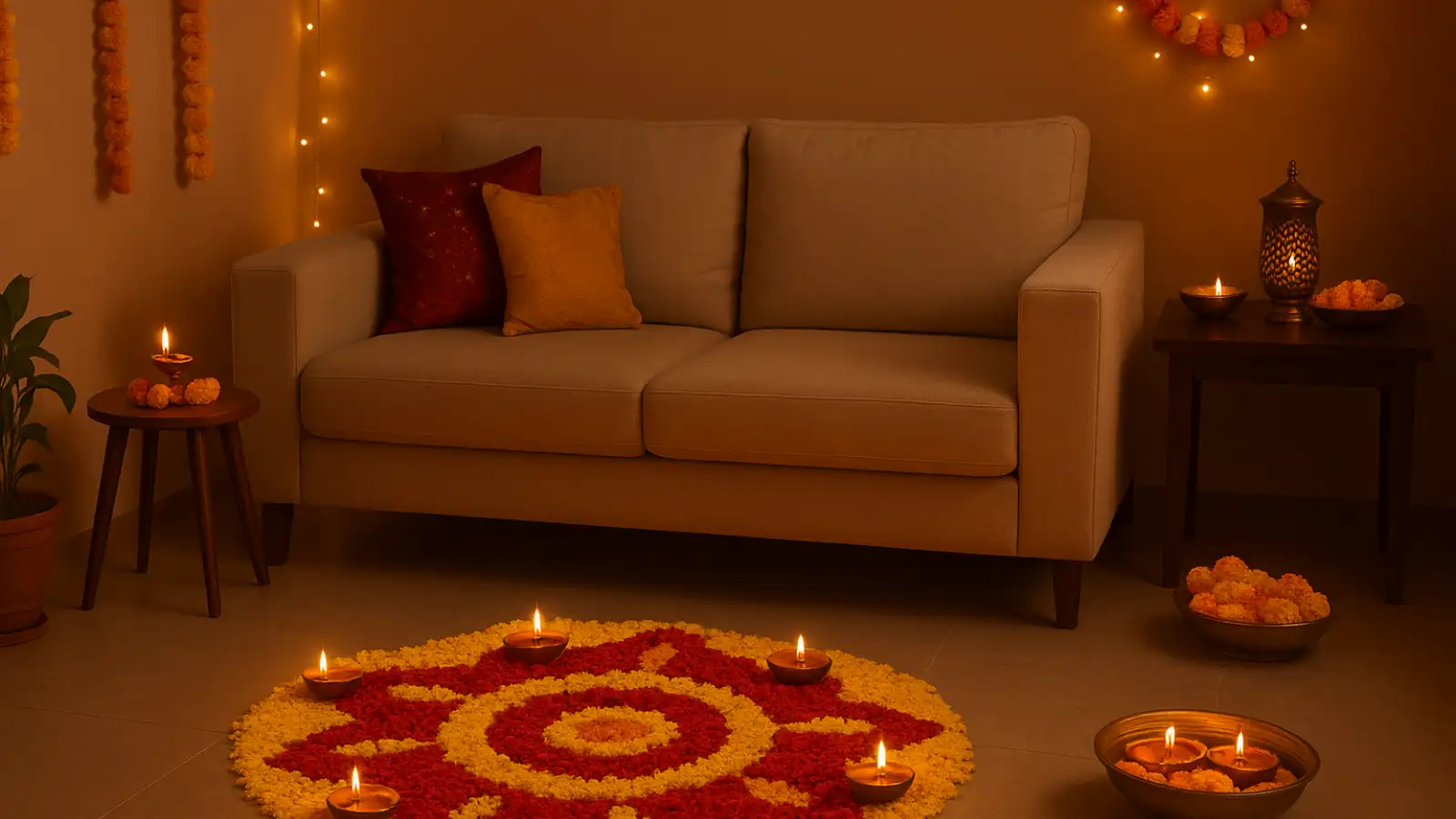
Coordinating Rangoli with Overall Home Decor
Match rangoli colours with lanterns, wall hangings, and torans for a cohesive Diwali theme. Extend patterns to lampshades, table runners, and picture frames for a unified festive aesthetic. Stick to 2–3 main colours for visual harmony.
Creating DIY Diwali Decoration with rangoli is more than just art - it’s a celebration of tradition, creativity, and family bonding. Start simple, experiment boldly, and enjoy the process. Each pattern adds joy, beauty, and positive energy to your home, making Diwali truly unforgettable.

Understanding Rangoli: A Timeless Art Form

Rangoli, derived from the Sanskrit word rangavalli, means "rows of colors." This traditional art has been practised for thousands of years in India, mainly to welcome gods and goddesses into homes.
During Diwali, Diwali rangoli represents prosperity and positivity. Families gather to draw intricate patterns, from lotus flowers and peacocks to geometric shapes, fostering togetherness. Modern designs blend tradition with creativity, allowing freehand or stencil methods for stunning effects.
Each region in India offers unique styles. Some use rice flour, others coloured powders or flower petals. Despite variations, rangoli’s purpose remains the same: to spread beauty, joy, and positive energy throughout your home.
Also Read: Diwali 2025: When Is It - October 20 or 21? City-Wise Puja Timings & Exact Date
Essential Materials for DIY Diwali Decoration
A well-prepared rangoli starts with the right materials:
- Colored powders: Red, yellow, green, blue, orange, and white
- Rice flour or chalk powder: For outlines
- Stencils or templates: Perfect for beginners
- Small spoons or funnels: For precise application
- Measuring tape: To plan your design
- Broom and cloth: For surface preparation
Eco-friendly materials, like turmeric, kumkum, and flower petals, are safe for kids, pets, and the environment. You can also create natural colours at home: turmeric for yellow, beetroot for pink, and spinach powder for green.
Preparing Your Space for Rangoli

The location of your rangoli impacts both beauty and function. Main entrances are ideal for welcoming guests and Goddess Lakshmi, while living rooms and courtyards are great for indoor displays.
Steps to prepare your space:
- Clean and sweep the area thoroughly.
- Measure and mark the centre point to maintain symmetry.
- Protect surrounding surfaces with newspapers or plastic sheets.
- Ensure adequate lighting - natural daylight works best.
Start small (3x3 feet) if you’re a beginner, and gradually increase complexity as your confidence grows.
Step-by-Step Guide to Creating a Basic Rangoli
Step 1: Outline Your Design
Use white rice flour or chalk powder to sketch simple geometric shapes. Dot guides help maintain symmetry. Light lines can be darkened later for clarity.
Step 2: Fill in Colors
Work from the centre outward. Use a spoon or funnel for precise application. Apply one colour at a time to avoid smudging, and keep extra powder nearby for touch-ups.
Step 3: Add Details and Embellishments
Enhance your rangoli with fine lines, dots, and swirls. Consider adding rose petals or marigold for natural beauty and fragrance. Place small diyas or candles for a festive glow.
Also Read: Diwali 2025: These Zodiac Signs Are Set to Receive Wealth, Luck, and Abundance
Advanced Rangoli Techniques and Patterns
Take your skills further with advanced designs:
- Traditional motifs: Lotus flowers, peacocks, Om symbols
- 3D effects: Shading with lighter and darker colours for depth
- Alternative materials: Colored sand, flower petals, crushed glass, rice, lentils, or spices
Layer materials for multi-dimensional art and experiment with textures for a striking Diwali rangoli display.
Integrating Rangoli with Other Diwali Decorations

You may also like
- Silence, homesickness, and grocery runs: Indian student studying in MIT, USA shares biggest challenge of moving abroad
- Maria Corina Machado: A veteran opponent of Chavez, Maduro, and Chavismo
- Ricky Hatton heartbreaking eulogies in full from emotional mum, son and daughters
- Leonardo DiCaprio tipped a hotel waiter with casino chips and said 'build something you believe in.' CEO shares inspiring encounter
- Halifax, Lloyds Bank and Santander £1,100 alert with millions affected
Your rangoli looks even more magical when paired with complementary decorations:
Diyas and Candles: Arrange small oil lamps around your design to frame it beautifully. Brass or copper diyas add traditional charm, while coloured glass holders offer modern flair.
Festive Lights: String lights around the perimeter to create glowing borders. LED lights add movement without disturbing powder designs.
Flower Decorations: Marigold, rose, and jasmine petals enhance colour and fragrance. Combine fresh and artificial flowers for longevity and natural beauty.
Tips for Long-Lasting and Vibrant Rangoli
- Use high-quality powders for brighter, lasting colours.
- Apply thin, even layers to prevent smudging.
- Protect designs from wind and foot traffic with barriers.
- Perform daily touch-ups and remove debris gently.
- Photograph your rangoli immediately for lasting memories.
Also Read: Diwali 2025: Elegant & Trendy Home Décor Ideas To Elevate Festive Vibes
Creative Rangoli Ideas for Different Areas

- Entrance and Porch: Bold, large patterns with auspicious symbols. Semi-permanent materials like coloured sand withstand outdoor conditions.
- Indoor Living Spaces: Smaller, detailed patterns that complement furniture and decor. Table-top rangoli on plates or trays adds elegance.
- Pooja Room or Altar: Traditional symbols in red, yellow, and white. Use pure, natural materials like rice, turmeric, and kumkum for a sacred touch.
Coordinating Rangoli with Overall Home Decor
Match rangoli colours with lanterns, wall hangings, and torans for a cohesive Diwali theme. Extend patterns to lampshades, table runners, and picture frames for a unified festive aesthetic. Stick to 2–3 main colours for visual harmony.
Creating DIY Diwali Decoration with rangoli is more than just art - it’s a celebration of tradition, creativity, and family bonding. Start simple, experiment boldly, and enjoy the process. Each pattern adds joy, beauty, and positive energy to your home, making Diwali truly unforgettable.









